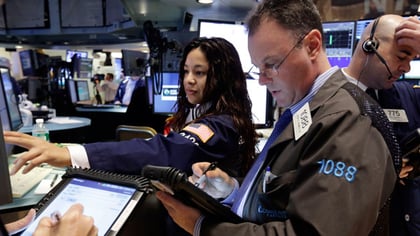Can U.S. stocks continue to advance given their rich valuations that appear disconnected from fundamentals?
It’s a question that many advisors are asking following 2019’s 28% gains in the S&P 500 despite negative year-over-year earnings growth for at least the first three quarters (fourth-quarter earnings aren’t all in yet).
Since 2007, the S&P 500 has returned 7% after accounting for inflation versus 1.85% for the rest of the world, even though the U.S. economic expansion, though the longest, has been one of the weakest; productivity growth has lagged GDP growth; and real wages, adjusted for inflation, has been essentially flat, according to James Montier, a member of the asset allocation team at Grantham Mayo Van Otterloo & Co.
Add to that the growing income inequality gap, with the top 10% of income earners collecting two-thirds of income growth — which is “a real problem for any society” — and the increase in corporate debt, now at its highest percentage of EBITDA since the early 2000s, said Montier who spoke at the Inside ETFs conference in Hollywood, Florida.
Earnings per share adjusted for inflation have risen an average 2.14% annually between the first quarter of 2007 and first quarter of 2019 — “not much better than GDP” — but they’ve been supported heavily by share buybacks financed by corporate debt, according to Montier.

The Shiller price-to-earnings ratio, which incorporates the average inflation-adjusted earnings from the previous 10 years, stands at 30 times for the S&P 500 versus 15 times for the rest of the world and 13 times for emerging market stocks.

“There are risks out there, and those risks are probably not worth paying the premium multiples,” said Montier. A collapse in cash flows is the key threat for the U.S. investors, he said.









 January 29, 2020 at 10:29 AM
January 29, 2020 at 10:29 AM











